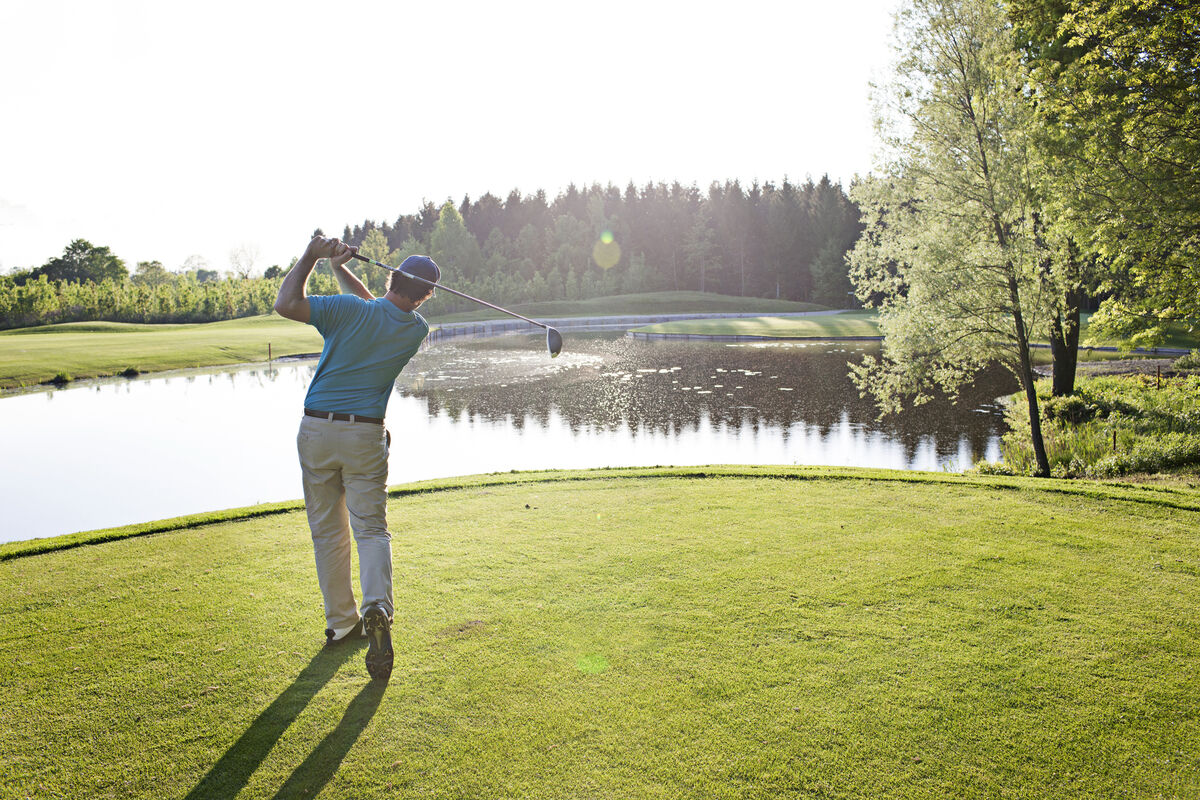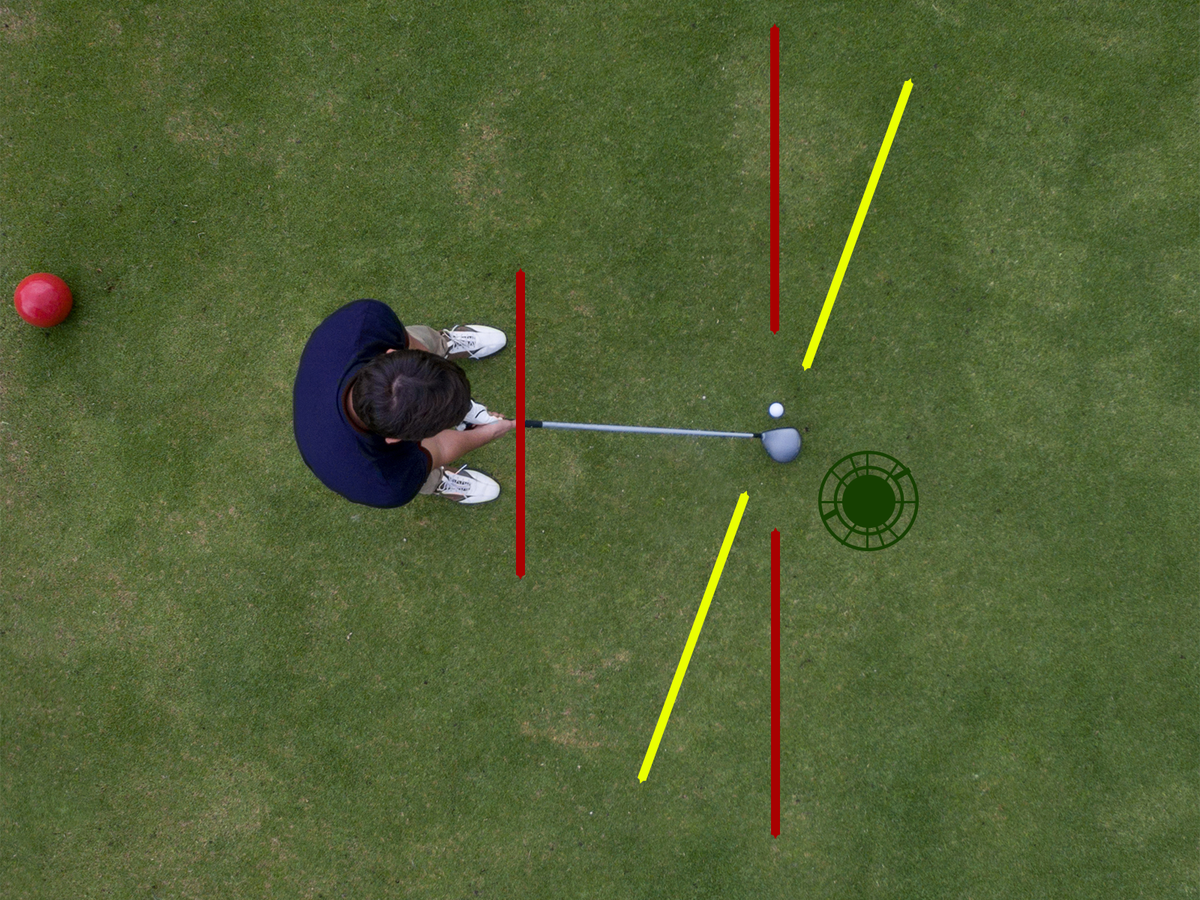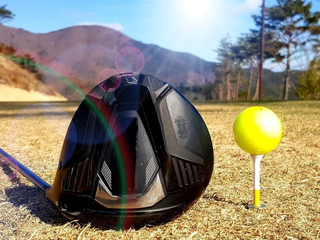How to Hit Your Driver: Learn to Hit Straighter, Longer Drives
Learn how to drive a golf ball and hit straighter, longer shots that lead to lower scores

In nearly 20 years of coaching golf, my students have never stopped asking how to drive a golf ball long and straight. I’d also bet that my fellow PGA coaches would insist that hitting driver well is the most sought-after skill by golfers who take lessons.
Hitting the driver long and straight is an essential part of golf. Since so many players are interested in hitting driver successfully, here are my tips to help you hit the driver straighter. A couple simple adjustments can help you hit the driver straighter, which in turn, leads to longer shots.
While today’s lesson is focused on helping you find more fairways through accuracy with your driver, that will also have a positive effect on your distance. After all, when you find the sweet spot, you not only hit it straighter, but longer too.
The Importance of Pre-Swing Fundamentals on Driving
First, it is important to note that what you do before you even swing the club matters. The pre-swing fundamentals of posture, grip, and alignment are critical for playing the game well. This is true no matter what club you use. Your stance, grip, and body alignment can significantly impact the outcome of your swing.
Posture
Posture is how you set your body up to the ball before you swing. Setting up with the correct posture allows your body to move properly once you start the swing.
Ball position is also a crucial part of the setup. When using the driver, you want a slightly wider stance, slightly past shoulder width. The ball should be positioned near the front of your stance, just off the heel of your lead foot. For right-handed golfers, that would be your left heel, and for left-handed golfers, just off the heel of your right foot. This ball position helps you achieve a more upward angle of attack at impact. A proper secondary spine tilt also increases your launch angle.
Grip
Your grip is also essential, as it is your only connection between your body and the club. The way you hold the golf club can significantly affect your success. Your grip literally controls what the clubface does during your swing.
A squarely struck shot with your driver, or any club, requires your hands to deliver the clubface squarely into the ball. When it comes to hitting the ball straighter, your lead hand has the biggest influence.
Alignment
Alignment is one of the most crucial aspects of driving the ball accurately, as it determines the direction of your shot. Golfers often align their bodies directly to the target, but this is incorrect because when you align your body to the target, your clubface will be too far right (for right-handed golfers) or too far left (for left-handed golfers).
For correct alignment, your clubface (not your body) must be square to the target line.
Right-handed golfers should align their bodies parallel left of the target. This includes having their feet, knees, hips, and shoulders all in line and stacked on top of each other. Left-handed golfers should align their bodies parallel right of the target line.
When your pre-swing fundamentals are solid, your set your swing up for a better chance of success. This includes the takeaway, backswing, positioning at the top of your swing, downswing, and impact.
Straighter Drives with Proper Path and Club Face Angles
Golfers often find that having strong pre-swing fundamentals helps resolve driving issues. This is typically achieved by working on alignment and grip. Once you improve these elements, the problems tend to fade away, so always check your alignment before taking a swing.
Assuming you have proper alignment and a good grip, only two main swing elements can lead to inaccurate drives. They are the face of your golf club at impact and your swing path.
To hit the driver straighter and eliminate slices, hooks, pushes and pulls, you need to understand the dynamics of face and path.
To truly begin to learn and understand how to swing a golf club correctly, you should become familiar with the Modern Ball Flight Laws. Knowing these principles will set you on the right path toward improvement. Once you become more comfortable with your understanding of the relationship between path and face, hitting the ball straighter will become a breeze.

Golf's Ball Flight Laws: Learn From Every Shot You Hit
The Modern Ball Flight Laws
One easy way to figure out why your golf ball is starting, and curving, the way that it is is to remember that the club face sends it, and the path bends it. The ball will start in the direction your club face is pointed at impact, and it will bend in the opposite direction of your path (if your path is to the left, your ball will curve to the right). Here’s how this translates to your ball flight.
| Face (to target) | Face-to-Path | Shape |
| Open | Open | Push Slice |
| Open | Square | Push |
| Open | Closed | Draw |
| Square | Open | Slice |
| Square | Square | Straight |
| Square | Closed | Hook |
| Closed | Open | Fade |
| Closed | Square | Pull |
| Closed | Closed | Pull Hook |
Driver Drills for Distance and Accuracy
I use the following two drills to help my students improve their club face and path to hit straighter drives. Practicing these drills at the range, on the course, or at home into a net can lead to significant benefits on the course.
Lines and Gate Drill for Club Face Control
Do you need help with alignment and club face control? If so, you're not alone. These are crucial elements that can make or break your game. But don't worry, I have a solution: the Lines and Gate Drill, which I use often with my students.
This drill requires just two alignment sticks and two tees. It's a simple yet effective way to practice your alignment and clubface control on the course.
Here's how it works:
First, stand a few feet behind your ball and visualize your target line. Once you've found the target line, place the first alignment stick behind the ball and directly down the target line. Double-check the accuracy by standing behind the line and verifying its positioning.
Next, place the second alignment stick where your toe line would be as you address the shot. It should run parallel to the left of the target line alignment stick. This is a common practice for many golfers.
Finally, after setting up the alignment sticks, place two tees in the ground on either side of your ball, roughly half an inch from the ball. This gate will help you visualize having a square face at impact.
To really kick this drill up a notch, do it on the course during less busy times. Practicing on the course sheds light on the importance of alignment and clubface control, something most golfers need to focus on during their practice sessions.
The Lines and Gate Drill might be the game-changer you've been looking for.
The Three P's Drill (Proper Plane Practice)

I use my Three Ps practice drill with my students to help them develop their swing plans and hand path.
What you need: 5 alignment sticks and a range bucket.
Here's how it works:
Step #1 - Set Alignment Sticks for Aim and Takeaway
Place one alignment stick about four feet behind the ball, flat on the ground, and run towards the target. Then place another four feet in front of the ball as pictured above.
Step #2 - Set Alignment Sticks for the Downswing Path
Place one alignment stick flat on the ground to the inside of your back target alignment stick at about a 45-degree angle.
Place another alignment stick flat on the ground to the outside of the front target alignment stick on that same path, as pictured.
Step #3 - Set Range Basket For Plane Reminder
Place the range basket upside down, just ahead and right of your target line alignment stick that is on the ground behind the ball. This will force your path on the downswing to come from the inside, not over the top.
Step #4 - Set Body Line Alignment Stick
Place an alignment stick flat on the ground at your toes and ever so slightly to the right of your target line's parallel left (for righties).
Step #5 - Hit Balls
Tee the balls up low on the ground as you hit. This is so you can keep a relatively consistent spot where you are hitting the ball from. The ball should be placed between the target alignment sticks.
Set your toes up against the toe line alignment stick.
Initially, take the club back in one piece, with the hands, arms, and club. As you go back, you will want the club face to stay in line with the back target alignment stick. Do not let the club move back initially too far to the inside of the back target alignment stick.
On your downswing, you want your hand path to trace over the downswing path alignment stick (one left of the back target alignment stick) and continue toward the path alignment stick just to the right of the front target line alignment stick.
As you approach the moment of impact, your main goal should be to make sure the clubface is square to the ball. At this point, your hand path should shift towards the left or inside of the front target alignment stick. Do this just after impact. This is when the hands and arms should start to release, allowing the forearms to roll over.
Continue shifting your weight fully into the lead foot and up to a balanced finish.
Try a Shorter Driver
One factor that can help golfers hit the ball straighter is the length of their driver. Many golfers play with drivers that are too long, which makes it hard to control the clubface as it approaches the ball, and also makes it more difficult to hit the sweet spot.
The average length of a driver on the PGA TOUR is about 44.75 inches, while the average length of an amateur driver is between 45.25 and 46 inches (the USGA limit is 46 inches).
Using a shorter driver can also help golfers hit the ball further. This is because a shorter driver allows the golfer to hit the center of the clubface more often, which transfers more energy from the club to the ball.
Golfers really should focus on hitting the ball straight and staying in the fairway rather than trying to hit the ball far. A shorter driver can help golfers achieve this goal. It provides more control and accuracy.

The Benefits of a Shorter Driver Shaft & How to Shorten Yours
Final Thoughts on Straighter Drives
Hitting the driver well consistently requires a marriage between fully understanding golf principles and having a great mindset. Through knowledge, practice, and having the proper driver in your hands, you are well on your way to being the driver you want to be on the course.
However, there are a few more things to consider.
Strategy
A firm understanding of your tendencies with the driver is very important. That knowledge will help you formulate a proper game plan on every tee box that requires you to hit the driver. One part of the equation is analyzing the hole, including where your landing spot should be and where trouble lurks. Making note of the outside elements that will affect the shot, including wind direction and speed, is another critical factor.
Process all that information, make a firm decision on your plan, visualize that shot in your mind's eye, and execute it.
Emotions
Don't fall into the trap of making rash decisions on the tee based on emotions. Pulling out the driver on a hole you probably should not, just because you are upset about a three-putt on the previous green, is not something you want to have happen too often.
You must try to have balanced emotions when you play this game, especially when you have a driver in your hand. An emotional or even angry golfer, with a driver in their hands, very often leads to bad things. Always make sure you are centered and of clear mind before hitting your driver.
If you are struggling with your driver, know that you can eventually be a great driver of the golf ball. Following my tips in this article will allow you to become the driver you have always dreamed of being on the golf course.